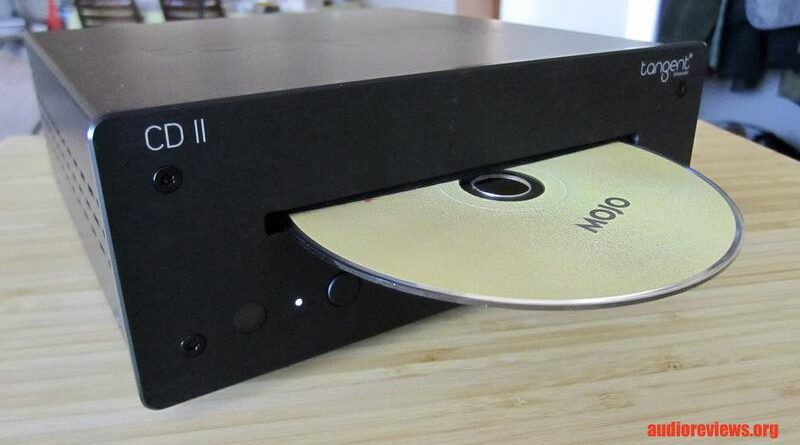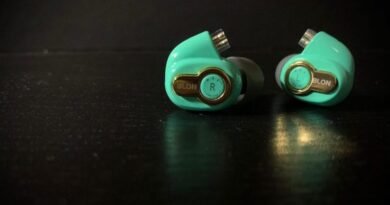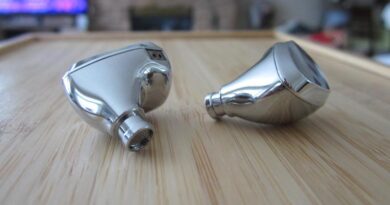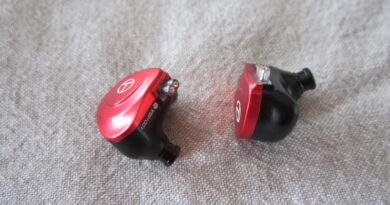Tangent CD II Review (1) – Jitter Assault
The €199.00/$300 CAD Tangent CD II is an elegant looking, small CD Player that offers adequate sound but lacks standard features such as continuous playback or a display. Its enormous jitter makes it a poor transport as it does not work with all DACs.
PROS
- Small footprint
- Stylish modern design
- Metal case with decent button mechanism
CONS
- Enormous jitter: does not work with all DACs
- No continuous playback
- No coaxial output
- No display
- Remote cannot directly access tracks above #6
- Not very responsive support
In this Article
I purchased the Tangent CD II at full price from Electronics For Less Canada.
Introduction
Tangent are a Danish audio company that had been established in 1996. They are known for their radios, loudspeakers, and Hifi components. Their designs follow these distinguished Scandinavian concepts we know from Bang & Olufsen or IKEA: simple and pragmatic, always with clear lines.
I purchased the Tangent CD II because I needed a small CD transport to work with a similarly sized desktop DAC/amp combo. After all, I have 3000-4000 CDs. Sure most of them have been ripped, but there is still the odd classical CD I had ignored in the past.
Specifications Tangent CD II
| Standby consumption: <0.50W (EUP 2013) Output: Optical, RCA Line Out Finish: Black Mains Power: 110-240V Dimensions (w/o feet): 195x194x70mm (WxDxH) OverBox Dimensions: 350x285x395mm OverBox Weight (G/N): 7.6kg / 7.0kg (3pcs/ctn) Retail Dimensions: 330x260x120mm (WxDxH) Retail Weight (G/N): 2.2kg / 1.66kg Continuous Playback: no Display: none THD+N: ? SNR: ? Linearity: ? Total Correlated Jitter: ? [very bad in my testing] Stop-Band Rejection: ? Product Page: Tangent CD II Manual: Tangent Danmark Tested at: €199.00/$300 CAD |
The most important specifications are not given (marked with “?”). When reading on, you may get an idea why.
Physicals, Functionality, and Operation
The Tangent CD II’s biggest asset is its small size: it is a square box, hardly exceeding the footprint of a CD. There is no display. The only indication that the player is on is a pinhead LED (white when on, red when on standby). The front panel is made of brushed steel with a row of buttons (with good mechanisms). the CDs are slot loaded, which works well. Good haptic and attractive design.
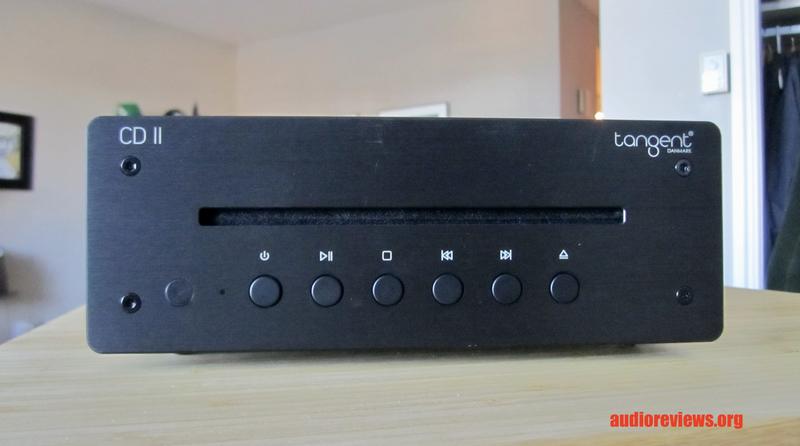
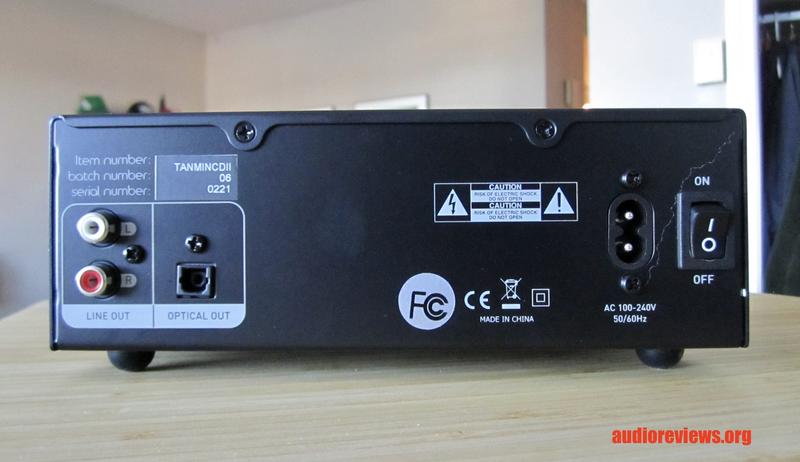
The back panel features the on/off switch, the power outlet, analog RCA line outs and S/PDIF (optical). A coaxial out is sadly missed.
The remote is a universal one to be also used for the company’s fitting amp and streamer. What is lacking is the ability to select ANY track on the CD…you are out of luck above #6 (!!!).
The drive is quiet during operation and responsive to the remote.
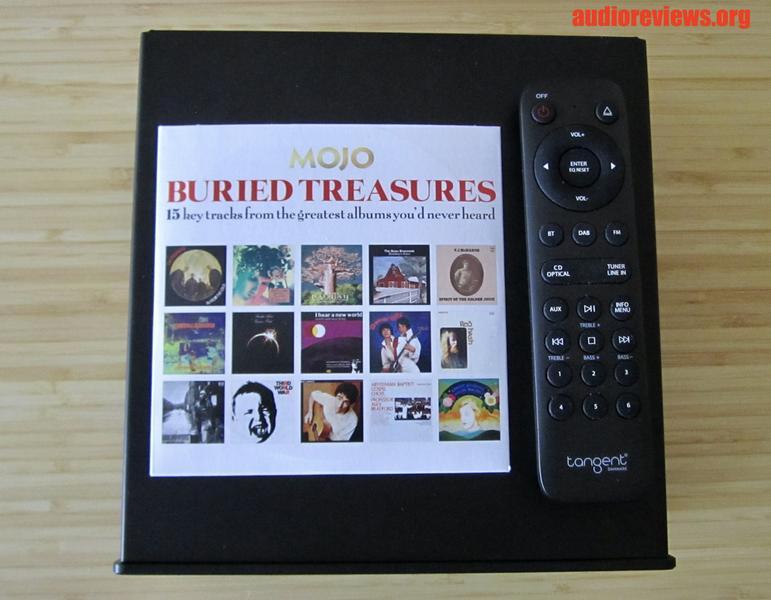
Listening/Sound
In my testing, I used the Tangent CD II as transport only and as full CD Player. The same music was used with all sources. I listened with the easily driven final Sonorous III headphones.
Setup I: CD II as Transport
I connected the Tangent CD II via its optical line out with the EarMen Tradutto and SMSL DO200 MK II DACs. The DACs were connected to the EarMen CH-Amp via balanced and RCA interconnects. In this setup, the CD II was used as a transport only — bypassing its own DAC. I compared the CD II with my iPhone connected via USB to the DACs.
Using the Tangent CD II as transport only worked with the Tradutto DAC. The CD II / SMSL DAC combo produced regular music dropouts every few seconds. I tried several Toslink cables — no difference. All alternative sources connected optically with the SMSL worked fine, hence the CD II must be the culprit. The problem is most likely timing errors (jitter) from the CD II.
The more expensive and technically more sophisticated Tradutto appears to have a rather high jitter tolerance. Tangent should have added a coaxial line out as it is less prone to jitter than optical.
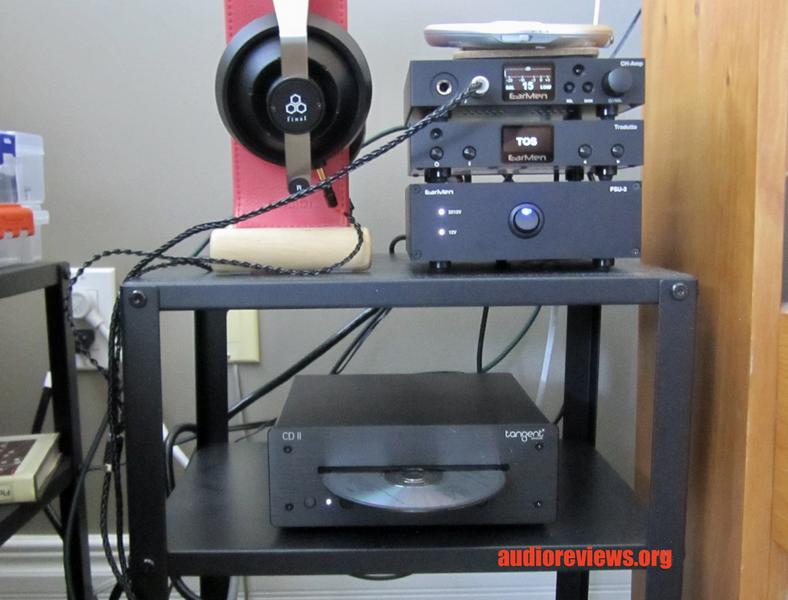
Setup II: CD II as CD Player
I also wired the Tangent CD II directly into the CH-Amp via the RCA line outs, thereby bypassing the external DACs. In a comparison test, I replaced the CD II with a vintage Panasonic Portable CD Player (with a dedicated 3.5 mm line out).
Results/Interpretation
iPhone via USB vs. CD II via optical into external DAC: the USB signal was stronger/louder and richer. I had to turn the amp much higher up to get the same volume with the CD II. The CD II has more rounded notes (Toslink effect) and sounded flatter than iPhone/USB. The CD II’s sound quality was acceptable to my ears: nothing harsh sounding. But the CD II needed so much more amp power, which may become an issue with hungrier cans.
CD II through external Tradutto DAC revealed a better sound quality compared to using its own DAC. The CD II’s integrated DAC delivered the lowest signal volume of the testing.
Through its own DAC, the CD II played “better” than the Panasonic. Both had approximately the same low output volume level.
In summary, the iPhone transport via USB delivered the best results.
Criticism
Unfortunately, the Tangent CD II has severe technical and operational shortcomings. First, it does not work well as a CD transport because of its jitter — you may get dropouts in your DAC. Optical connections are prone to jitter, which could be mitigated by a coaxial output that the CD II lacks. I presume Tangent use cheap parts.
Another real bummer is the lack of continuous play: when listening to a Live album, you get gaps between tracks…which is really annoying….and, frankly, substandard.
Also amateurish is the limited functionality of the remote: you can only access tracks 1-6 directly. If you’d like to, for example, go to Variation #26 of J.S. Bach’s Goldberg Variations, you are out of luck. Sure, you can forward one by one, but the lack of a display makes your navigation much guesswork.
And then there is the low output level…
Summa summarum, it is no surprise that Tangent does not include the crucial specs in their manual.
Concluding Remarks
The Tangent CD II offers adequate performance as a CD Player, provided you listen to albums and don’t want to jump between tracks. As a CD transport, it is a tricky option as it may not work with all DACs because of its enormous timing errors through its optical line out. Several operational misses described above complete the list of plunders.
On the positive side, Its biggest assets are its attractive design and its small footprint.
I regret having purchased it as it simply does not do its job for me (as a CD transport) — and I find it overpriced. As it seems, it features the simplest technology available in an attractive box.
Tangent Danmark’s marketing obviously relies on the popularity of stylish Danish design in general and the potential customer may have subconsciously Bang & Olufsen in mind. But, under the hood, the CD II does not offer enough substance to warrant its purchase in my opinion as it lacks too many basics.
Until next time…keep on listening!

Disclaimer
Our generic standard disclaimer.



